This YA paranormal mystery/romance is a page-turner all the way. Told in the present tense, the action always feels immediate. The author captures Amelia’s grief over her mother, self-doubt over her paranormal abilities, and conflicting pulls of love for both the dead Matthew and the living Kip.
Add a CommentViewing: Blog Posts Tagged with: Loss, Most Recent at Top [Help]
Results 26 - 50 of 58
Blog: The Children's Book Review (Login to Add to MyJacketFlap)
JacketFlap tags: Romance, Mystery, Chapter Books, Paranormal, Suicide, Death, Grief, Loss, Ghosts, Books for Girls, Hauntings, Fantasy: Supernatural Fiction, Teens: Young Adults, Gail Gallant, Teenage Love, Add a tag
Blog: Jen Robinson (Login to Add to MyJacketFlap)
JacketFlap tags: Reviews, family, Young Adult, loss, Newsletter, jennifer e. smith, young adult romance, dual viewpoint, long distance relationship, Add a tag
Book: The Geography of You and Me
Author: Jennifer E. Smith
Pages: 352
Age Range: 12 and up
I loved Jennifer E. Smith's The Statistical Probability of Love at First Sight, and also enjoyed This Is What Happy Looks Like. Like those two books, The Geography of You and Me is a young adult romance, heavy on character development and light on sappiness. Which is how I like them. Two teens meet in an elevator during a power outage in New York (they've seen each other before, but never spoken). Despite coming from very different backgrounds, they discover a connection over the course of a long, electricity-free evening. Geography is against them, however, as Lucy's family moves almost immediately to Scotland, while Owen ends up driving west with his father. Can such a tenuous connection, nurtured mainly by "Wish you were here" postcards, turn into something real?
I thought that this book was very well done. The socioeconomic differences between Lucy and Owen are there, and cause occasional awkwardness, but are incidental to their sense of connection. Lucy feels isolated from her largely absent parents, while Owen misses his recently deceased mother. Both teens are isolated from other kids, even as they attend school. Lucy is a self-professed "geeky bookworm", constantly on the lookout for a good place to read. Owen is quietly brilliant on the science and math side, but is also computer shy, and not very keen on books or email. They joke about the idea of Herman Melville's Bartleby, a character who responds to everything with "I would prefer not to." Owen eventually names a pet turtle Bartleby.
Although there's a hint of intellectualism to The Geography of You and Me, it's far from over the top. While Lucy's family is clearly well off (leaving their New York apartment vacant for months, in case they want to go back for a visit), Owen is from a blue collar background. His father spends most of the book looking for work, and the two even end up briefly sleeping in their car. I think that Lucy and Owen could hold their own with John Green's characters, but they are less consciously witty.
As for the romance, it felt real to me. Both Owen and Lucy meet other people (the book wouldn't be interesting if it was too easy), but they can't let go of that sense of connection with each other. There's a nice section with short chapters that show them thinking about each other, in parallel, despite being 5000 miles apart. Here are a couple of snippets:
"She wondered if there was a word for loneliness that wasn't quite so general. Because that wasn't it, exactly; it wasn't that she was feeling lonesome or empty or forlorn. It was more particular than that, like the blanket on the root this morning: Here in the kitchen, there was an Owen-shaped indent." (Chapter 5)
"But he couldn't find the words. And so instead, they just stood there, regarding each other silently, the room suddenly as quiet as the elevator had been, as comfortable as the kitchen floor, as remote as the roof. Because that's what happened when you were with someone like that: the world shrank to just the right size. It molded itself to fit only the two of you, and nothing more." (Chapter 8)
Given that the two main characters actually spend most of the book geographically separated, its good that The Geography of You and Me is about more than just the relationship between the two protagonists. Lucy reconnects a bit with her parents, and experiences the travel that she's always longed for. A scene in which she finally visits a city that she has longed to see gave me immense satisfaction as a reader. Owen and his father, meanwhile, are figuring out what their life means without Owen's mother, and what they mean to one another. Parents on both sides are more attuned to what's going on in their teens' lives than said teens realize. It's refreshing to have a book take a good look at parent/teen relationships, without melodrama, rather than focusing on friendships with other kids.
I highly recommend The Geography of You and Me to fans of Jennifer E. Smith's previous novels, and to anyone who enjoys young adult romance (with nothing more PG than a few kisses) and realistic fiction. Because half of the book is told from Owen's perspective, I actually could imagine boys liking this book, though one might have trouble getting them to pick up a book with kissing on the cover. But for teenage girls and adult women, The Geography of You and Me should be an excellent fit.
Publisher: Poppy (@LBKids)
Publication Date: April 15, 2014
Source of Book: Advanced digital review copy from the publisher
FTC Required Disclosure:
This site is an Amazon affiliate, and purchases made through Amazon links (including linked book covers) may result in my receiving a small commission (at no additional cost to you).
© 2014 by Jennifer Robinson of Jen Robinson's Book Page. All rights reserved. You can also follow me @JensBookPage or at my Growing Bookworms page on Facebook.
Blog: The Children's Book Review (Login to Add to MyJacketFlap)
JacketFlap tags: Terminal Illness, Christina Richardson, Religion, Loss, Angels, Author Showcase, Illness, Afterlife, Add a tag
Short Stories of Heaven is a wonderful resource for children and their families who are dealing with loss and terminal illness, as well as people who are looking for a way to explain the afterlife to children.
Add a CommentBlog: Welcome to my Tweendom (Login to Add to MyJacketFlap)
JacketFlap tags: family, recipes, success, loss, magical realism, Philomel, arc from publisher, 2/13, Add a tag
"Haven't you ever had anything you loved doing, Mom?...Something that was worth getting in real big trouble for?" ( Will Asher - arc p. 200)
This is a world where people either have a Talent or are simply Fair. Talents can range from the ability to knit anything at a quick pace (Mrs. Asher) to the ability to spit with choreographic grace and accuracy (Zane).
Cady lives in an orphanage in Poughkeepsie New York with Miss Mallory. Each of them has a talent that drives their lives. Cady has a talent for baking. She can size up a person and know exactly what kind of cake to bake that will bring them the most possible happiness. Miss Mallory has a talent for making matches, which has led to her matching countless parentless children with the right families. Even though Miss Mallory has attempted to match Cady in the past, it has never been the perfect match. The tug in her chest hasn't been enough to place Cady with the right family.
Meanwhile, in town, the Owner of the Lost Luggage Emporium has been on a lifelong quest. He believes that a piece of lost luggage holds the secret to his success. He has been trying to track down the powder blue St. Anthony suitcase that he lost 53 years prior. The loss has turned him bitter, and Toby who works with the Owner, is subject to his random temper and tirades.
Also in town are the Asher family. The aforementioned Zane hasn't always yielded his talent for good, and the words of his school Principal haunt him, as his misguided attempts to help his family bring him nothing but trouble. Zane's sister Marigold is desperately searching for her own talent, as she tries to keep not only Zane, but little brother Will (who has a talent for disappearing) out of trouble.
Add a bake-off, recipes, attempted adoption, archeological crime, a mysterious wordless stranger, a wayward ferrt and an in-and-out narrator dressed in a gray suit, and you have A Tangle of Knots. I know I haven't done the best with plot summary, but that is because Graff's story defies description. Story-lines dance and weave, short chapters keep the forward motion, and the reader finds him/herself trying to predict what will come next. That said, I can't help but throw in the idea of the mash-up/remix with titles like Savvy, The Westing Game and Pie coming to mind. Not bad company to be in. While A Tangle of Knots most definitely pays homage, I do think Graff has made this all her own. The moment I finished reading, I wanted to go back and re-read to fit the pieces together.
Blog: Jrpoulter's Weblog (Login to Add to MyJacketFlap)
JacketFlap tags: children, family, friendship, change, Animals, Teacher Resource, parenting, accident, death, grief, loss, moving, natural disaster, J R Poulter, Muza Ulasowski, Add a tag
Muza Ulasowski, my wonderful collaborator, has created a fabulous FB page for our picture book, “The Sea Cat Dreams”! Muza’s wonderfully life like illustrations have perfectly captured the story in a way I could never have envisaged! She has truly captured the story’s essence! Here are some samples:
The story is about coping with life impacting change something that can happen planned [as in a house move] or completely unplanned [as with a natural disaster, accident, death etc]. Coping with change, as child/family psychologists and counselors all say, is something that has a profound impact, especially on the young. As with grief, adults are often too preoccupied with the change and its ramifications to be able to take in how the children, who are being impacted by change, are managing or not managing in the new setting/situation.
The cat in the story moves, accidently, from one environment & family on a farm, to another very different one, aboard a fishing boat. He is then impacted further by the loss of a master he has come to love. But this is not the end. He moves through his life’s dramatic changes; firstly, by grieving, something we need to encourage each other and especially children, to do. He then reaches out to, shares with and cares for others also affected by loss, in this case, the fisherman’s widow. He gradually accepts his new life situation, not for a moment forgetting what has happened, but treasuring the wonderful memories he has.
The process of grieving must be acknowledged and the grieving child/adult be allowed to express their grief or sense of loss at the change in their lives and encouraged to do so. Let them talk, let them share as much as they need to. Highlight the constructive aspects, positive elements, e.g, wonderful memories of a dead friend, relative or pet. If the impacting change has involved a move – be it to a different school, to another suburb, another state, another country – encourage the keeping of contacts where possible, assist with the making of new contacts and the sharing of the process of moving and resettling, especially any humorous incidents.
The hope in writing this book, was to help children talk about their own stories of life changing events and to recognise, that whilst change is not always pleasant, we can become stronger for it and be better able to reach out and empathise with others experiencing its many faceted impact on their own lives.
See it here: http://utales.com/books/the-sea-cat-dreams
Blog: Kid Lit Reviews (Login to Add to MyJacketFlap)
JacketFlap tags: death, loss, 4stars, Library Donated Books, stillborn, unborn child, Children's Books, family, friendship, hope, relationships, Add a tag
4 Stars Farfalla: A Story of Loss and Hope Vanita Oelschlager Vanita Books 978-0-9832904-0-7 No. Pages: 42 Ages: 4 to 8
From Publisher’s Website: Farfalla (the Italian word for “butterfly”) is a unique look at the death of an unborn child. The story is told from the perspective of young Beetle who, with his mother, meets a crowd of caterpillars in the garden they all frequent. Soon they become friends and he watches in awe as the caterpillars weave themselves into cocoons. A special one catches his attention and Beetle “adopts” it by making all sorts of plans of what they will do together when it hatches.
. . . . . . .
Little Beetle meets a caterpillar and they play together in the garden. Then one day, the caterpillar is not around and Little Beetle  cannot find him. Little Beetle is upset until his mother has him look up toward the sky. There in the trees are cocoons. Mother Beetle explains to her son how the caterpillars will soon become butterflies. Little Beetle patiently waits for the butterflies to emerge.
cannot find him. Little Beetle is upset until his mother has him look up toward the sky. There in the trees are cocoons. Mother Beetle explains to her son how the caterpillars will soon become butterflies. Little Beetle patiently waits for the butterflies to emerge.
While Little Beetle waits, he sees one cocoon and decides to adopt it. While waiting for his new friend to open into a butterfly, Little Beetle tells the cocoon what fun they will have. Soon the butterflies begin to emerge from their cocoons—but not Little Beetle’s adopted friend. Little Beetle checks each day to see if the cocoon has blossomed into a butterfly. He has named the still unborn butterfly Farfalla. All the cocoons have opened except Farfalla. She has died. Mother Beetle explains death to her son, telling him that Farfalla has gone.
. . . . . . . .Butterflies that are not not born go to live
. . . . . . . .with all the other butterflies who die and
. . . . . . . . fly up in the sky with the stars and the moon
Farfalla is a sensitive story about a delicate situation—the death of an unborn child. I like the use of cocoons and butterflies as “the  baby in mommy’s tummy.” With the cocoon, the child can see the caterpillar lying in his cocoon. The unborn butterfly goes up to the stars and the moon; unborn children go up into the sky to heaven. This is a wonderful way to make this subject accessible for the youngest minds.
baby in mommy’s tummy.” With the cocoon, the child can see the caterpillar lying in his cocoon. The unborn butterfly goes up to the stars and the moon; unborn children go up into the sky to heaven. This is a wonderful way to make this subject accessible for the youngest minds.
The illustrations are beautiful, with oversized objects, and color from edge to edge. The pages are lively, until the cocoon has died. At this point, the illustrations become darker, as if night has fallen. I think the black background represents Little Beetle’s grief and confusion. Once he says goodbye to Farfalla, who waves from high in the sky, the background returns to the bright blue of the clear sky. Little Beetle has accepted Farfalla’s death.
Children excitedly await the birth of a new brother or sister and then, for whatever reason, the baby does not survive birth. Young children often do not have the ability to understand the concept of death—of someone leaving and never, ever returning. Three, four and five-year-old children do not see death as a permanent state of being.
Cartoons help reinforce the idea of non-permanence of death when the character “dies” in one episode, only to come back to “life” in the next, or even the same, cartoon. The Tom and Jerry cartoons and the Roadrunner and  Coyote are good examples of cartoons that reinforce children’s idea of death as temporary.
Coyote are good examples of cartoons that reinforce children’s idea of death as temporary.
Toddlers understand that something is “all gone,” such as their dinner. Yet, that dinner returns each night. Not until age ten, do most kids firmly grasp that death is permanent and can happen to anyone. Farfalla helps parents talk to their young children about the death of not only an unborn child, which is the intent of the author, but also the death of anyone, or anything.
Vanita Books tend to have messages but they are not preachy in any way. Vanita Books tell great stories that are fun and lively. Children will love and treasure these books, and Farfalla is no exception. The illustrations in Vanita Books are gorgeous and interestng. They capture the mood of the story.
Farfalla is a sensitive story with profound meaning. I recommend this to anyone who must explain death to a young child. While the cocoon represents a child in the womb, Farfalla can help explain any death to a young child. The main thing for a child to take away is the person, or pet, went to heaven and are happy there, just as Farfalla is with the stars and the moon, happily looking down upon Little Beetle.
Farfalla: A Story of Loss and Hope.
Author: Vanita Oelschlager website Illustrator: Kristin Blackwood website blog Publisher: Vanita Books website Release Date: September 1, 2012 ISBN: 978-0-9832904-0-7 (hardback) Ooooo 978-0-9832904-3-8 (paperback) Number of Pages: 42 Ages: 4 to 8 . . . . . . . . .
Filed under: 4stars, Children's Books, Library Donated Books Tagged: children's books, death, family, friendship, hope, loss, relationships, stillborn, unborn child
Blog: Jrpoulter's Weblog (Login to Add to MyJacketFlap)
JacketFlap tags: Reviewing, parenting, children's book, grief, loss, children's stories, separation, Prue Mason, Crichton Award, Mending Lucille, Sarah Davis, story books, step parents, SHeryl Gwyther, Library resource, Australian Children's Book Awards, Awards for literature, J R Poulter, creative arts, Lynelle Westlake, Peter Allert, Lynn Priestley, book creation, Journey of a Book, Michelle Tofts, Anil Totop, Central City Library, Michelle Richards, Ozan Tortop, SCBWI QLD, review, children, children's books, books, illustration, Reading, picture book, Literacy, Fiction, picture books, Writing, inspiration, children's literature, Add a tag
The set up, which I thought would only take an hour, stretched to all morning. Coordinating the set up of an exhibition this size with so many ‘exhibitors’ had Michelle Richards, the Brisbane Central Library’s exhibition coordinator, running a million directions at once, advising as to ‘how [it was something new to a lot of us], finding stands and suggesting modes of display, and generally guiding us all through to ‘VOILA!’ – one fascinating and very varied exhibition!
But there was more – not just the glass cases to set up, but hanging around to do the hanging! this was not as straightforward as it sounds. We had to somehow attach our paintings to fine dangling wires and – here’s the worst part GET THEM TO SIT $#@*# STRAIGHT!
Click to view slideshow.Blog: The Children's Book Review (Login to Add to MyJacketFlap)
JacketFlap tags: Multicultural, Family, Ages 9-12, Africa, Chapter Books, Loss, featured, Shana Burg, Teens: Young Adults, Cultural Wisdom, Social Graces, Add a tag
By Shana Burg, for The Children’s Book Review
Published: July 28, 2012
Shana Burg is the author of A Thousand Never Evers (Random House, 2008) and Laugh with the Moon (Random House, 2012). Both novels are for tween, teen, and adult readers. In a starred review, Publishers Weekly wrote, “Gripping. Delivers an emotional wallop.” Kirkus Reviews calls Laugh with the Moon “A vivid work of art.”
Laugh with the Moon tells the story of a 13-year-old girl from Massachusetts whose father brings her to live in the bush in Malawi, Africa after the death of her mother.
Laugh with the Moon (Random House, 2012) grew out of one of the greatest adventures of my life. One week I was a graduate student studying public policy at the Harvard’s Kennedy School in Massachusetts. The next, I found myself in a Land Rover tooling through the bush in Central Africa with my driver, translator, and new friend Norman Mbalazo.
I went to Malawi under the guidance of a professor to investigate whether the girls in Malawi’s primary schools had the same access to learning materials like teachers, books, and pencils as the boys did. “I’m not qualified to do that!” I told my professor. But she convinced me that what was really needed was “a fresh pair of eyes.” Her eyes were tired. She had been visiting Malawi for many, many years.
So there I was, in the African jungle, with Norman and my fresh pair of eyes, slowly being transformed by the people I met in this tiny, landlocked country that is one of the poorest on earth. What I saw in the rural schools fascinated me. Yes, sometimes there were 200 students packed into a single classroom sitting on the floor. Yes, often there were roosters walking around inside the schools. And yes, many of the students learned outside in the middle of the rainy season, which meant that whenever the rains came, class was over for the day.
But with my fresh pair of eyes, I also saw the amazing ways that students and teachers were dealing with the cards they’d been dealt. Teachers taught students the alphabet by having them make letters out of termite hill mud, and draw with sticks in the dirt.
In some schools, older students helped teach younger students as the adult teachers roamed from room to room. If a teacher did not
Add a CommentBlog: Litland.com Reviews! (Login to Add to MyJacketFlap)
JacketFlap tags: teach, book of the day, Orthodox, gifted, generations, raising children, virtues, priest, advanced reader interest, authors & guests, Summer/vacation reading, ethics/morality, teachers/librarians, single parenting, Book of the Day!, classroom ethics, Visitation, Annunciation, Catherine Hickem, death of child, disabled child, Hickem, Marian, review, ya, teens, children's books, book reviews, reading, family, vacation, kids, history, book, literature, young adult, book review, young adults, summer, Adults, Christmas, God, teaching, education, children's, non-fiction, motherhood, character, homeschooling, parenting, bible, Jesus, homeschool, holiday, teen, grief, loss, psychology, disabled, therapy, mothers, birth, bedtime stories, Christian, children's lit, reflection, character education, Mary, gifted education, book club, mothers day, new release, Evangelical, morals, Memorial Day, Catholic, bible stories, psychotherapy, reader, Add a tag
 Hickem, Catherine. (2012). Heaven in Her Arms: Why God Chose Mary to Raise His Son and What It Means for You. Nashville, TN: Thomas Nelson. ISBN 978-1-4002-0036-8.
Hickem, Catherine. (2012). Heaven in Her Arms: Why God Chose Mary to Raise His Son and What It Means for You. Nashville, TN: Thomas Nelson. ISBN 978-1-4002-0036-8.
What do we know of Mary?
What we know of Mary’s family is that she is of the house of David; it is from her lineage Jesus fulfilled the prophecy. Given the archeological ruins of the various places thought to have been living quarters for their family, it is likely the home was a room out from which sleeping quarters (cells) branched. As Mary and her mother Anne would be busy maintaining the household, with young Mary working at her mother’s command, it is likely Anne would be nearby or in the same room during the Annunciation. Thus Mary would not have had a scandalous secret to later share with her parents but, rather, a miraculous supernatural experience, the salvific meaning of which her Holy parents would understand and possibly even witnessed.
Mary and Joseph were betrothed, not engaged. They were already married, likely in the form of a marriage contract, but the marriage had not yet been “consummated”. This is why he was going to divorce her when he learned of the pregnancy. If it were a mere engagement, he would have broken it off without too much scandal.
Married but not yet joined with her husband, her mother would prepare her by teaching her all that she needed to know. This is further reason to assume that Mary would be working diligently under her mother’s eye when the Annunciation took place.
We know that her cousin Elizabeth’s pregnancy was kept in secret for five months, and not made known until the sixth month when the Angel Gabriel proclaimed it to Mary. We know Mary then rushed to be at her elderly cousin’s side for three months (the remaining duration of Elizabeth’s pregnancy), and that this rushing appeared to be in response to Elizabeth’s pregnancy (to congratulate her), not an attempt to hide Mary’s pregnancy. Note how all of this is connected to Elizabeth’s pregnancy rather than Mary’s circumstances. As Mary was married to Joseph, he likely would have been informed of the trip. Had the intent been to hide Mary, she would have remained with Elizabeth until Jesus was born, not returned to her family after the first trimester, which is just about the time that her pregnancy was visible and obvious.
So we these misconceptions clarified, we can put Mary’s example within an even deeper context and more fully relate to her experience. We can imagine living in a faith-filled family who raises their child in strict accordance of God’s word. The extended family members may not understand, and certainly their community will not, so Mary, Anne and Joachim, and Joseph face extreme scandal as well as possible action from Jewish authorities. But they faced this together steep in conversation with God, providing a model for today’s family.
Although sometimes scriptural interpretations are flavored with modern-day eye, overall this book will be more than just a quick read for a young mother (or new bride, or teen aspiring to overcome the challenges of American culture, or single parent losing her mind). It is a heartwarming reflection with many examples that open up conversation with God. As an experienced psychotherapist, the author’s examples are spot on and easy to relate to. We do not need to have had the same experiences to empathize, reflect, and pursue meaning; we see it around us in everyday life. As such, a reflective look upon these examples can help one overcome an impasse in their own relationship with God and also open the reader up to self-knowledge as Hi
Blog: Shelf-employed (Login to Add to MyJacketFlap)
JacketFlap tags: death, Jews, J, books in verse, based on a true story, Advance Reader Copy, family life, loss, Depression Era, Baltimore, poverty, poetry, siblings, book review, Add a tag
April is National Poetry Month, and I realize that I've almost let the month slip away without any poetry book reviews. Just in time, I came across my Advance Reader Copy of Looking for Me, which went on sale April 17.
Rosenthal, Betsy R. 2012. Looking for Me. Boston: Houghton Mifflin Harcourt.
Based on the real stories of her mother and many aunts and uncles, Betsy Rosenthal tells a story in verse of her mother, Edith - the fourth child in a large, Jewish, Depression-era family in Baltimore,
and in the middle of us all, Dad,
just a trace.
But after she left,
Blog: Read Now Sleep Later (Login to Add to MyJacketFlap)
JacketFlap tags: Realistic, fiction, young adult, mystery, death, loss, 5 stars, Simon and Schuster, abuse, thriller, missing persons, kimberlybuggie, SimonPulse, TracyBilen, WhatSheLeftBehind, Add a tag
Category: Young Adult Realistic Fiction
Keyword: Thriller, Death, Loss, Missing persons
Format: Hardcover, ebook
From Goodreads:
I have a confession. I cheated.
So, I'm always giving my one friend a hard time be
Blog: Jrpoulter's Weblog (Login to Add to MyJacketFlap)
JacketFlap tags: Leonie Norrington, J R Poulter, Hetty Verolme, J.R.McRae, YA, Reading, Uncategorized, Poetry, non fiction, picture books, toys, young adult fiction, teen fiction, Teacher Resource, Short Story, loss, memoirs, verse, Danette, performance, cow, story books, nonsense verse, narrative verse, Speech and Drama, numeracy, Craig Smith, sick children, Michael Salmon, Christian Bocquee, Lindsay Pow, Lola Berry, Marlish Glorie, Add a tag
Can’t remember when I’ve had so much creative fun with such a fantastic group of multitalented folk! 13th to 16th January we arrived in from all over – WA, NT, Vic and ’locals’ Christian and self. We were housed in the Gatton Motel, a leg stretch away from the main venue, not that we needed to walk. We were chauffeur driven everywhere by local Minibus/taxi owner Sue.
This is the door to my room, the non-existent No. 13, on 13th January, a Friday, how lucky can you get! Interesting how many places omit room 13, floor 13 etc etc. Do folk really think we are so bound by superstition and hangovers from the dark ages that we will eschew a room or a whole floor just because of a place in a numeric sequence? Evidently it is so.
Presenting
Our sessions had small groups of ardent attendees at, what for me at any rate, were a series of workshops. who interacted with us freely and kept us on our toes with their questions. [more coming... I just need to sleep now...]
Blog: Jrpoulter's Weblog (Login to Add to MyJacketFlap)
JacketFlap tags: parenting, heroes, Short Story, loss, children's stories, play, orphanage, orphans, anthology, weapons, Family pet, Victimisation, J R Poulter, stray, children's hospitals, sick children, institutions, YA, children, cur, Fition, institutionalisation, mongrel, The Stray, Bullying, Literacy, dog, Fiction, Pets, memoir, young adult fiction, teen fiction, Education, Dogs, boys, Add a tag
Please leave a comment or like – I won’t be upset if you do both!
Blog: Jrpoulter's Weblog (Login to Add to MyJacketFlap)
JacketFlap tags: Bullying, Animals, heroes, sleep, Family pet, Victimisation, Education, drawing, gossip, grandparents, possum, Smile, J.R.Poulter, grandfather, bridging generations, elder romance, intergenerational links, Janice Phelps Williams, Linda S. Gunn, native habitat, Pixiefoot Press, scandal mongering, Tara Hale, imagery, story books, SCWBI, children's books, books, illustration, Reading, Reviews, humour, Fiction, Pets, picture books, Writing, inspiration, children's literature, Reviewing, parenting, loss, children's stories, review, children, Add a tag
“With sensitive and humorous prose, J.R. McRae tells a story of family life, love, and acceptance with beautiful illustrations by Linda Gunn. When Pete finds a furry hero, Ink, to solve his dinnertime woes, a nosey neighbor jumps to conclusions that enlarge as Pete’s grandpa comes to visit. When Mrs. Allan’s mother-in-law, Nanny, and Pete’s grandpa take off for an early-morning drive, the assumptions increase until Ink and Grandpa solve the mystery. Perfect for young readers, this book speaks of a boy and his grandpa, a mother defending her son from gossip, and the surprise of love at any age.” ~Janice Phelps Williams, author, illustrator www.janicephelps.com
Promotional poster, by Tara Hale, for “All in the Woods”, Pixiefoot Press, 2011
Blog: Jrpoulter's Weblog (Login to Add to MyJacketFlap)
JacketFlap tags: Awards, review, children, children's books, books, illustration, Reading, Reviews, Literacy, Fiction, picture books, Writing, inspiration, Education, children's literature, Teacher Resource, Reviewing, parenting, survival, grief, loss, children's stories, separation, Crichton Award, imagery, story books, step parents, Victimisation, Victims, Library resource, Australian Children's Book Awards, Awards for literature, Family Therapists Award, Add a tag
I thought I had probably long gone received the last of the reviews for my Crichton Award winning picture book, “Mending Lucille”. WRONG! Just got the loveliest, very belated review -
RADIO NEW ZEALAND: http://www.radionz.co.nz/search/results?mode=results&q=Mending+Lucille
http://podcast.radionz.co.nz/ntn/ntn-20110617-1037-childrens_book_review_with_john_mcintyre-048.mp3
Sarah Davis [my amazing collaborator, illustrator on this wonderful project] sent it to me today. It came out on 17th June this year! Better late than never!
John McIntyre gave a very thoughtful, in depth review citing the use of “Mending Lucille” by the Monash Centre for Grief Education in the training of counselors working with children experiencing grief, loss or separation from a parent.
Blog: studio lolo (Login to Add to MyJacketFlap)
JacketFlap tags: loss, sea, comfort, healing, studio lolo, soaked, compassion, illustration friday, ocean, Add a tag
Blog: Jrpoulter's Weblog (Login to Add to MyJacketFlap)
JacketFlap tags: books, illustration, Fiction, drawing, haiku, heroes, grief, anthology, creative arts, cross cultural exchange, ipad, New rising Sun, Reading, Poetry, Literacy, memoir, Writing, inspiration, loss, memoirs, e-book, verse, imagery, narrative verse, iphone app, Add a tag
This fundraising anthology is to be an e-book – poets writers, artists, please give of your talents to help the Japanese peope in their hour of need!
The link : http://booksthathelp.org/
New Sun Rising
Blog: The Children's Book Review (Login to Add to MyJacketFlap)
JacketFlap tags: Death, Loss, Ages Nine to Twelve: Books for third through sixth grade, Carl J. Schutt, Animals, Add a tag
A new book for older children, Remembering Oakley, by Carl J. Schutt, tells the story of Jacob and his beloved dog, Oakley. When Jacob's mother tells him it's time to put Oakley down, Jacob struggles to understand why.
Add a CommentBlog: Shelf-employed (Login to Add to MyJacketFlap)
JacketFlap tags: books, music, reading, rhyming, book review, librarians, dogs, school visits, funny, grief, loss, rhythm, dinosaurs, Bedtime Stories, wordless, possibilities, E, cumulative, Add a tag
Spinelli, Jerry. 2010.I Can be Anything! Illustrated by Jimmy Liao. New York: Little, Brown.
A rhyming romp through all of the possibilities of the future - "cross-legged sitter, make-believe critter, deep-hole digger, lemonade swigger." Who knows? Bright and joyful illustrations!

Fuge, Charles. 2010. Yip! Snap! Yap! New York: Sterling.
Another lively, rhyming romp! This one featuring delightfully goofy dogs!
Thomson, Bill. 2010. Chalk. Tarrytown, NY: Marshall Cavendish.
The illustrator of the exquisitely illustrated, Baseball Hour, Bill Thompson outdoes himself with Chalk - a wordless book that tells the story of a magical, rainy day at the playground for three children and a mysterious bag of chalk. Let your imagination run wild and enjoy Bill Thomson's hand-crafted brilliance!
Geringer, Laura. 2010. Boom Boom Go Away! Illustrated by Bagram Ibatoulline. New York: Atheneum.
Music lovers, noise makers, and children who don't want to go to bed will love Boom Boom Go Away! Its cumulative rhyme is full of playfulness and imagination. The warm illustrations evoke picture books of an earlier era.
Jeffers, Oliver. 2010. The Heart and the Bottle. New York: Philomel.
This is not a book for storytime. It's a serious book for a special child - perhaps a grieving child, a child with a profound loss, a child who may have placed her heart in a bott
Blog: Shelf-employed (Login to Add to MyJacketFlap)
JacketFlap tags: book review, fantasy, dolls, girls, loss, mothers, grandparents, J, Add a tag
Bauer, Marion Dane. 2010. The Very Little Princess. New York: Random House.
"All books are judged by their covers until they are read."
from The Incorrigible Children of Ashton Place: The Mysterious Howling, by Maryrose Wood.
I try to read across a broad spectrum of children's literature, to help me in my job as a children's librarian. I take Reader's Advisory seriously and try hard to match each child with the perfect book. Towards that end, I picked up The Very Little Princess, thinking that I have been neglecting, (for lack of a better term) "girly-girl" books. The delightful pink cover with Elizabeth Sayles' fanciful artwork attracted my attention and sealed the deal.
I could not have been more wrong, however, in classifying this short tale as a lighthearted story for girls. (spoiler alert)
One fine June morning, Zoey is surprised by her mother's off-hand remark that they will be leaving soon for her grandmother's house.
Of course, visiting your grandmother probably is natural for you. But it wasn't for Zoey. The truth is she had never met her grandmother. Until that moment, she hadn't even known she had a grandmother!Zoey dutifully packs a cardboard suitcase (she is by nature a dutiful girl) and goes off to her grandmother's rural home where she is again surprised to find that her mother and grandmother do not appear to be on good terms. In fact, they argue heatedly, prompting Zoey to go exploring, and thereupon to find a most beautiful three and one-quarter inch tall doll. She is further surprised when the tiny doll sits upright and sneezes!
What child has not dreamed of a doll that comes to life? But this is not the doll of dreams. Princess Regina, (as she likes to be called), is a self-centered, bossy doll, a doll that treats Zoey as a servant. But Zoey, being by nature a dutiful girl, is not particularly bothered by Regina's selfish, narcissistic behavior. In fact, she comes to love the diminutive princess, and in her fashion, the princess loves Zoey, too. As the book jacket declares in similar terms, this is an expertly crafted story of family, friendship, love and loss. It is. It also, however, the story of a loss so profound that the dust jacket's cheery countenance might leave a young reader bereft, as she reads that Zoey's mother leaves her, with nothing more than a cheerful, "Be good," with a woman that a day ago, she never even knew existed. Zoey is left with her grandmother because her mother needs to be alone. Does this really happen? I'm sure that it does. Should it happen in a short, cheerful, small-sized book that is suggested for ages 6-9? I'm not sure. In the final chapter, the reader finds that the grandmother turns out to be a kind, wise, and loving woman, but the loss is still great. Place this book in the hands of a child who is capable of understanding and appreciating the story.
Read it as a well-told story, a unique story, even an enchanting story; but don't judge this book by its cover.
Add a Comment
Blog: Playing by the book (Login to Add to MyJacketFlap)
JacketFlap tags: Loss, Shirley Hughes, Night-time, Moon / stars, Add a tag
**I’ve a giveaway on at the moment –
click here to find out what’s on offer and how to enter!**

Photo: Diego_3363
Shirley Hughes is one of our favourite illustrators in this house and although we’ve read and enjoyed many of her books (though not all 200 or so she has illustrated nor all 50+ she has written), over Christmas we came across a book of hers that was new to us – Abel’s Moon.
Abel Grable arrives home after a long time away from his family. He may be a missionary, or an explorer, or simply a sailor but whatever he is, it entails long periods away from his family travelling through jungles and swamps, in “remote places where there were no electric lights or street lamps, only the moon to guide the way.“.
His family, of course, are delighted to have him home and thrilled to hear his stories of adventure in lands far, far away. In fact, his young boys are so keen to hear Able tell and re-tell his stories that Able decides to put them to paper.

Photo: Hitchster
Soon the time comes for Abel to leave the family once more for work. With Abel gone, his stories are read and re-read until they are known by heart by the family who miss Abel so much. With such longing it is no surprise that the boys take to playing in the garden where Abel’s desk has been left. They use the desk to create a jungle camp, a boat, and then a moon machine which perhaps could take them one day to “give Abel a wonderful surprise by dropping in on him, wherever he was“.

This is a story that could make you cry. A story of love, loss, the power of imagination to find ways through to connect with the ones you miss and long for. Although heartache is in some way at the centre of this story, it is ultimately a joyous tale, about how one can acknowledge one’s sorrow and still find a way to feel close to those far away.
All this sounds so terribly serious, especially for a picture book for young children, but the story is told sensitively, gently, with warmth but without sentimentality, in a way that entrances M and could certainly provide both parents and children with solace and hope should they ever be in a similar situation.
Abel’s family are so full of love and joy, despite the periodic hole in their lives and Shirley Hughes’ drawings capture that warmth incredibly well. As is typical of her style, her pictures are full of detail, the kids look slightly unkempt, the mum rosy cheeked and curvy, the house slightly chaotic and dilapidated but full of life.
Blog: Teach with Picture Books (Login to Add to MyJacketFlap)
JacketFlap tags: mourning, death, loss, dying, coping, teaching with picture books, Audrey Penn, Kissing Hand, picture books, Add a tag
Death. It's a nearly universal theme for middle school and YA literature (see my No More Happy Endings discussion at the English Companion Ning), but not one of the more popular themes for picture books. But for those who teach units or novels dealing with loss, life cycles, generations, war, or even seasons, the topic of death is likely to emerge. More important to consider, however, is that your students will also lose people in their lives: siblings, parents, grandparents, friends, teachers. Picture books can provide a delicate and appropriate means of discussing the loss of loved ones.
Although this book is meant for audiences younger than those I typically teach and write for, I recommend this book because it will help students to understand the positive purposes behind memorial services. Audrey Penn has skillfully structured the narrative to include a blueprint for any teacher or parent helping a child to deal with loss.
First, Mrs. Raccoon helps Chester to understand the nature of death as frankly and clearly as possible. She compares it to experiences he has already known, such as the passing of old Mr. Beaver.
Second, Chester finds comfort in the company of friends. I read over twenty picture books on the topic of death before writing this post, and several of them portray children trying to sort through their feelings about lost loved ones with no direction from adults or friends. I would hate for children to think theyre alone in a time of crisis. In Annette Bley's And What Comes After a Thousand, for example, young Lisa is upset that mourners at Otto's service are so quiet and morose; that's not what her old friend would want. Fortunately, she is able to confide in her friend Olga, who he
Blog: Jrpoulter's Weblog (Login to Add to MyJacketFlap)
JacketFlap tags: Awards, children's books, books, illustration, Reading, Reviews, Fiction, picture books, Writing, inspiration, children's literature, Teacher Resource, Reviewing, parenting, grief, loss, children's stories, separation, Crichton Award, imagery, Sarah Davis, story books, step parents, J.R.Poulter, Victims, Library resource, Australian Children's Book Awards, Awards for literature, Family Therapists Award, creative arts, child psychology, counselling, Family therapy, Add a tag
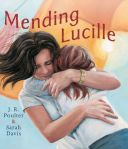
Mending Lucille - cover
Mending Lucille has been described as …
“…a book to be treasured by all. It is the story of a young girl and how she copes with the loss of her mother. The illustrations are both stunning and sensitive… Mending Lucille is a story which will help any child coping with the loss of a loved one. It shows that time will heal but you never have to forget. The theme of grief is dealt with in a sensitive and age appropriate manner. The little girl is never given a name. She doesn’t need one. She is every child who has ever suffered the pain of losing someone they care about.”
I loved it. “The Reading Stack”, Issue 11, August 2008, page 12
Peak inside now – http://bit.ly/VQxs1

Blog: Beth Kephart Books (Login to Add to MyJacketFlap)
JacketFlap tags: loss, marriage, Barcelona, Nothing But Ghosts excerpt, Add a tag
 ...I finally found them down where a wedding was going on, or had already happened, my mother sitting on a bench, my dad beside her, both of them watching this bride and her groom at the edge of a pond where the water was so still I could have sworn it was a mirror. I saw my mom pull a flower straight out of a tree. I saw her stand, take the flower to the bride, and bow her head. I saw her go back to the bench and sit down with my dad and ask him, "Would you marry me again, Jimmy? Would you?"
...I finally found them down where a wedding was going on, or had already happened, my mother sitting on a bench, my dad beside her, both of them watching this bride and her groom at the edge of a pond where the water was so still I could have sworn it was a mirror. I saw my mom pull a flower straight out of a tree. I saw her stand, take the flower to the bride, and bow her head. I saw her go back to the bench and sit down with my dad and ask him, "Would you marry me again, Jimmy? Would you?"
"In a heartbeat," he said, "and you know it."
"I wouldn't take any of it back," Mom said, and maybe I don't know how you put regret inside a painting, maybe I can't figure out Miss Martine, maybe I can't really save my dad from sadness, but maybe so much time goes by that you start to understand how beauty and sadness can both live in one place.
Blog: Beth Kephart Books (Login to Add to MyJacketFlap)
JacketFlap tags: mourning, loss, storm, Add a tag
 You recognize the pale gray pink before a storm; you know the storm's coming. Even so, when the storm came in this morning, I was unprepared for its volume—thunder like a jet just off the tarmac, hail the size of rock salt, rain in straight white nails driving down.
You recognize the pale gray pink before a storm; you know the storm's coming. Even so, when the storm came in this morning, I was unprepared for its volume—thunder like a jet just off the tarmac, hail the size of rock salt, rain in straight white nails driving down.
It is a storm in the wake of a week of losses. The grandson of my mother's best friend, just 24. An ebullient former colleague of my husband's, only 49. A friend's beloved father. The first two taken as suddenly as the storm that just knocked in. They were there, and then they were vanished. They were whole, and then they were gone. The third a man who, his daughter writes, "was my hero and my best friend."
We are silenced by storm. We are made to listen.
View Next 7 Posts






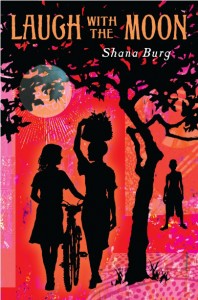
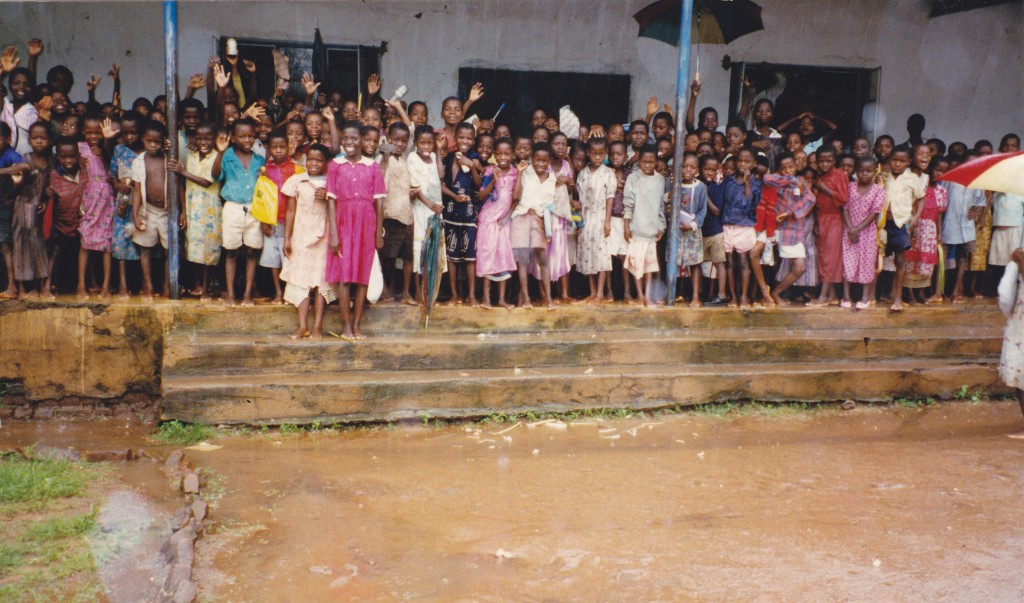
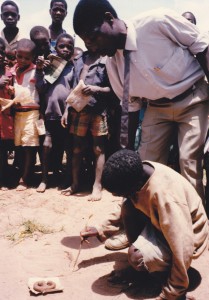
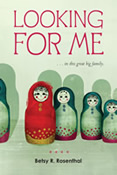



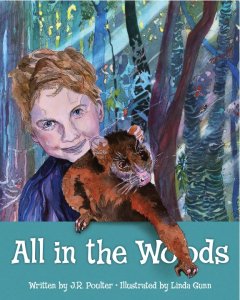
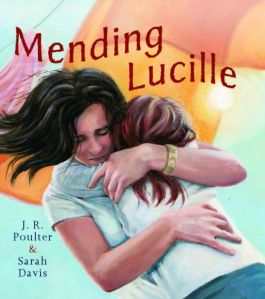





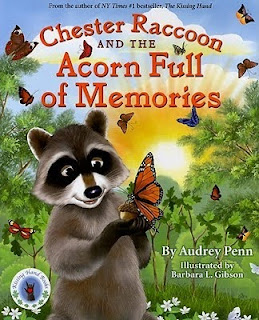

I just finished reading this minutes ago and went looking to see what others thought. There is much to love here and I am eager to see how it reads on a second go now that I know how the tangle all works out. By the last third of the book though I started to feel outwardly manipulated. The hands pulling the strings seemed a bit too visible. And yet...I loved this odd little book and I do want to bake some of those cakes! Let me know if you reread it and I'll do the same.
Hi Cindy. Funny...I found myself settle in rather than the other way around. I'll let you know when the reread happens! And let me know which recipes you choose!